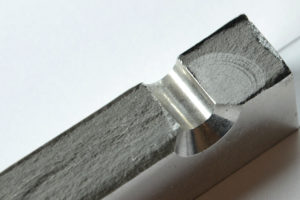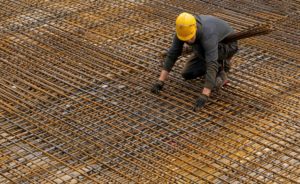In an exciting development for both the aerospace industry and the state of California, Hill Engineering has officially been welcomed to the California Manufacturing Technology Consulting (CMTC) Made in California Program.
Continue reading Hill Engineering Joins CMTC’s Made in California Program: A New Chapter in Manufacturing ExcellenceTag: Residual Stress Engineering
Search results for Hill Engineering blog posts containing the tag residual stress engineering
New case study: Residual Stress
The heart of work at Hill Engineering has everything to do with residual stress. That’s why we thought it was about time we published a case study giving a general overview of what residual stress is, and why it is so important for designers and manufacturers to consider.
Continue reading New case study: Residual StressResidual Stress
Residual stress is the stress present in a material in the absence of externally applied loading. These stresses can often form during manufacturing, and are typically an unintentional byproduct of a manufacturing process. Residual stresses can be caused by a number of factors, including plastic deformations, temperature cycles, or phase transformations.
Residual stresses can positively or negatively affect a product’s performance, which makes them a vital consideration for any critical design component. Often, structures are designed with considerable safety factors, in which case the effects of residual stress can be ignored, but as we push for higher performing structures that operate closer to the cutting-edge of technology, factors like residual stress can be the difference between successful performance and structural failure.
Positive values of residual stress are referred to as tensile, meaning the material is being pulled or stretched. Unintended tensile residual stresses can cause undesirable results, including cracking and failure. If tensile stresses induced by manufacturing processes are not taken into account, these can lead to premature failure.

Negative values of residual stress are referred to as compressive, meaning the material is being pushed together. These kinds of residual stresses can improve the performance of fatigue-critical components. Surface treatment processes like shot peening and laser shock peening intentionally introduce compressive stress in select locations at the material surface to make products perform better. For instance, introducing compressive residual stress can toughen brittle materials such as glass in smartphone screens or pre-stressed concrete used in city infrastructure.

Overall, the residual stress on any given plane in a material must be in equilibrium, but there can be local regions with tensile or compressive stress. Below is our Residual Stress 101 vlog, which highlights the information above.
Residual stress engineering involves the practice of manipulating residual stresses in order to maximize the usability and lifespan of manufactured components.
Through residual stress measurement techniques, Hill Engineering is capable of quantifying the internal stresses in a material, to better inform design decisions. We are the industry leader in Contour Method measurements and provide the same level of precision and accountability in a broad range of other residual stress measurement methods.
The methods we employ are as follows:
- Contour Method
- Slitting Method
- Hole Drilling
- Ring Core
- X-ray Diffraction
- Neutron Diffraction
- Deep Hole Drilling
- Barkhausen Noise Analysis
- Biaxial Mapping
- TrueSlot
Hill Engineering is a trusted source for a wide range of measurement capabilities. For more information about residual stresses or any of the residual stress measurement techniques we employ at Hill Engineering, feel free to contact us.
The effects of laser peening and shot peening on high cycle fatigue in 7050-T7451 aluminum alloy
The high cycle fatigue performance of 7050-T7451 aluminum was investigated for untreated as-machined, laser peened, and shot peened conditions. Constant amplitude, smooth (Kt=1) fatigue tests were conducted in four-point bending at a stress ratio of R=0.1. Results show that laser peening induces a layer of compressive residual stress more than three times deeper than for shot peening. Both treatments significantly increase fatigue performance.
Correlation of one-dimensional fatigue crack growth at cold-expanded holes using linear fracture mechanics and superposition
This work assesses the ability of linear elastic fracture mechanics (LEFM) with superposition to correlate the growth of one-dimensional fatigue cracks at cold-expanded open holes under constant amplitude loading. Care is taken in the work to accurately: control the test setup to ensure one-dimensional crack growth, determine residual stress in the coupons, measure crack growth, determine the fatigue crack growth rate (FCGR), compute stress intensity factors, and correlate fatigue crack growth rate with stress intensity factor range ΔK and stress ratio R.
The Impact of Forging Residual Stress on Fatigue in Aluminum
Large aluminum forgings are seeing increased application in aerospace structures, particularly as an enabler for structural unitization. These applications, however, demand an improved understanding of the forging process induced bulk residual stresses and their impact on both design mechanical properties and structural performance. In recent years, significant advances in both computational and experimental methods have led to vastly improved characterization of residual stresses.
Residual Stress Mapping with Multiple Slitting Measurements
This paper describes the use of slitting to form a two-dimensional spatial map of one component of residual stress in the plane of a two-dimensional body. Slitting is a residual stress measurement technique that incrementally cuts a thin slit along a plane across a body, while measuring strain at a remote location as a function of slit depth.